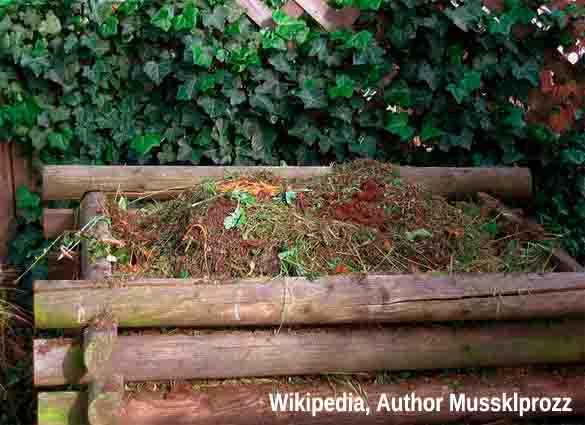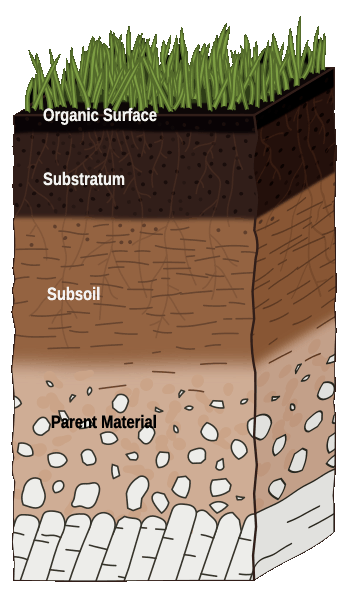Soil Additives
When it comes to soil, it's very important to know if you want to grow flowers or vegetables. Flowers – especially perennials – are available for nearly all soil types, locations, and conditions. Good perennial shops usually ask what conditions the buyer has and then create a suitable offer. The right flowers in the right place will thrive. This is especially true for native plants and wildflowers.
Vegetables are different. As cultivated plants that have been bred for centuries, they are standardized to thrive in "rich, deep, loose" soil. However, this type of soil is not available everywhere. Therefore, various additives are introduced to help create such soil.
The key point is the formation of humus. This process involves earthworms, snails, woodlice, various small organisms, fungi, and soil bacteria. All efforts in developing a fertile vegetable soil should focus on promoting this "soil fauna." Only when in balance healthy vegetable-growing soil can develop. The most important addition for this purpose is, of course, compost, whether homemade or sourced from a certified compost plant (be sure to pay attention to this quality label!).
It's also simple if you have a lawn that hasn't been treated with herbicides: Both the moss from scarifying and the grass clippings used as mulch promote humus formation. Grass mulch also has the advantage of being a favorite habitat for earwigs, where they raise their young: They eat everything smaller than themselves, especially aphids, and are often fed to birds.
The goal should be to have healthy soil that is rich in humus and life, where healthy vegetables can grow.
The key point is the formation of humus. This process involves earthworms, snails, woodlice, various small organisms, fungi, and soil bacteria. All efforts in developing a fertile vegetable soil should focus on promoting this "soil fauna." Only when in balance healthy vegetable-growing soil can develop. The most important addition for this purpose is, of course, compost, whether homemade or sourced from a certified compost plant (be sure to pay attention to this quality label!).
It's also simple if you have a lawn that hasn't been treated with herbicides: Both the moss from scarifying and the grass clippings used as mulch promote humus formation. Grass mulch also has the advantage of being a favorite habitat for earwigs, where they raise their young: They eat everything smaller than themselves, especially aphids, and are often fed to birds.
The goal should be to have healthy soil that is rich in humus and life, where healthy vegetables can grow.
.
©Hannelore Goos 2025
Here I present some additional additives with which I have my own experience - in unsorted order:
- Sand
It is often suggested to mix sand into heavy (clay) soils. However, the oldest mortar used for building
houses was made from clay and sand, which became rock-hard when dried.
Here’s a recommendation how you can still use sand: 👉
- Cocos
In the past, gardeners used large amounts of peat, both in the soil and as a moisture-retaining layer.
Besides the destruction of peat bogs that contributes to climate change, peat has some downsides as well.
Here are the benefits of coconut fibre: 👉
- Wood in the form of chips or shavings, bark mulch, garden fiber, biogel
Such additions can be beneficial for humus formation if a few things are considered.
Here are the detailed explanations: 👉
- Lava granules, expanded clay
What bonsai growers have known for decades about the benefits of fine lava granules should also be
utilized by hobby gardeners. Expanded clay is often used for hydroponics.
Here are a few remarks 👉

Compost in your own garden

Schematic structure of a garden soil
according to Wikipedia,
Author: Thomáš Kebert & umimeto.org
Schematic structure of a garden soil
according to Wikipedia,
according to Wikipedia,
What about the stones that are naturally found in the soil? They mainly interfere with the cultivation of carrots, radishes, and other root vegetables. However, they also play a valuable role in keeping the soil loose. Additionally, they undergo natural weathering, which continuously releases trace elements. A wise gardener once said, "Stones are the bones of the earth." Where no tools with sharp edges like plows are used, they do not cause harm. My suggestion: Remove them from the beds and collect them in the paths in between. There, they can have their positive effect without causing disruption.